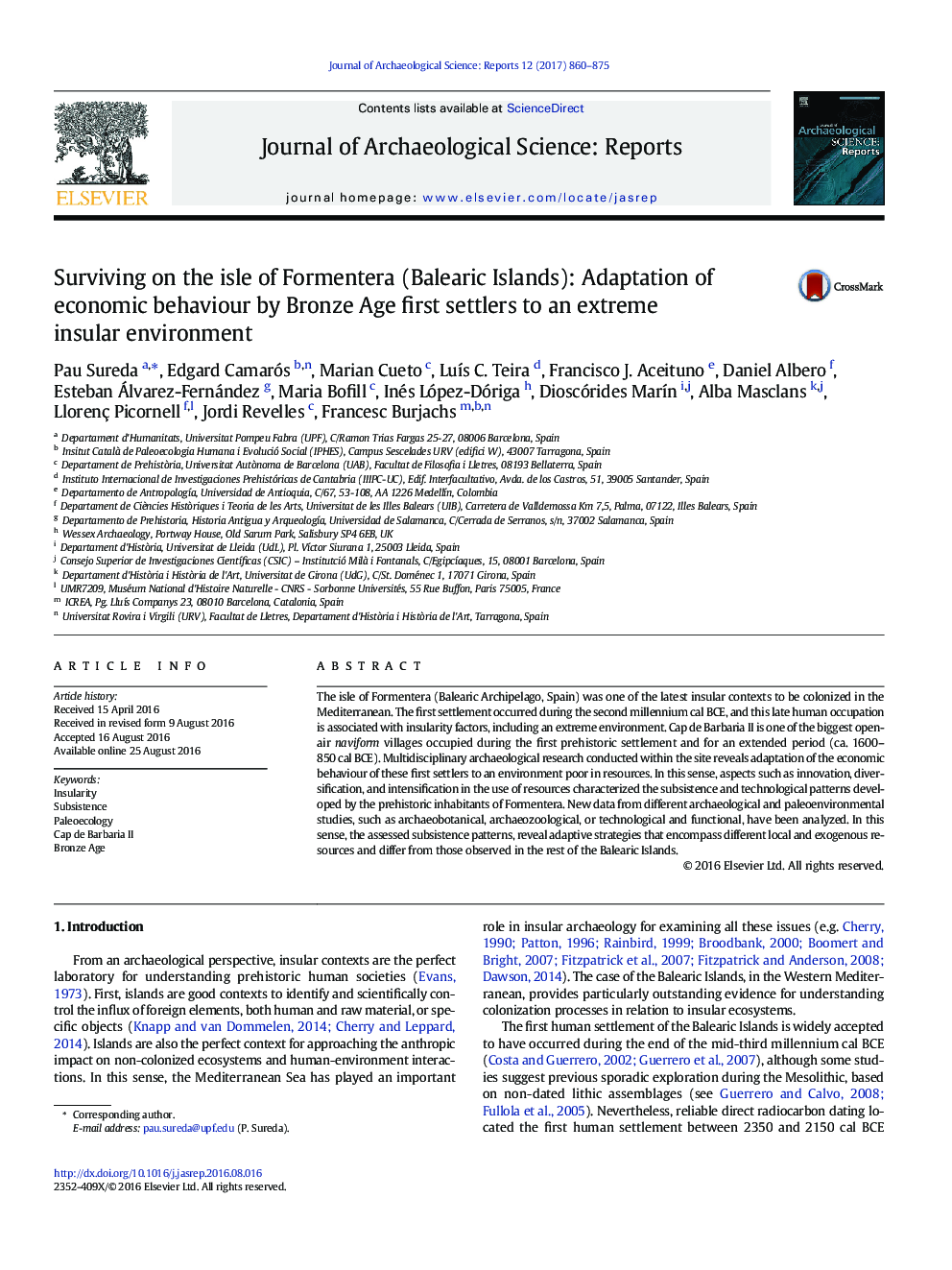| Article ID | Journal | Published Year | Pages | File Type |
|---|---|---|---|---|
| 5112471 | Journal of Archaeological Science: Reports | 2017 | 16 Pages |
Abstract
The isle of Formentera (Balearic Archipelago, Spain) was one of the latest insular contexts to be colonized in the Mediterranean. The first settlement occurred during the second millennium cal BCE, and this late human occupation is associated with insularity factors, including an extreme environment. Cap de Barbaria II is one of the biggest open-air naviform villages occupied during the first prehistoric settlement and for an extended period (ca. 1600-850 cal BCE). Multidisciplinary archaeological research conducted within the site reveals adaptation of the economic behaviour of these first settlers to an environment poor in resources. In this sense, aspects such as innovation, diversification, and intensification in the use of resources characterized the subsistence and technological patterns developed by the prehistoric inhabitants of Formentera. New data from different archaeological and paleoenvironmental studies, such as archaeobotanical, archaeozoological, or technological and functional, have been analyzed. In this sense, the assessed subsistence patterns, reveal adaptive strategies that encompass different local and exogenous resources and differ from those observed in the rest of the Balearic Islands.
Related Topics
Social Sciences and Humanities
Arts and Humanities
History
Authors
Pau Sureda, Edgard Camarós, Marian Cueto, LuÃs C. Teira, Francisco J. Aceituno, Daniel Albero, Esteban Álvarez-Fernández, Maria Bofill, Inés López-Dóriga, Dioscórides MarÃn, Alba Masclans, Llorenç Picornell, Jordi Revelles, Francesc Burjachs,
